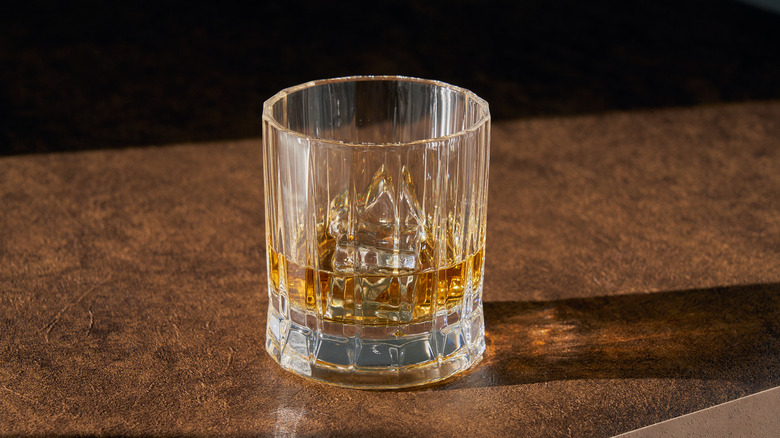What Does It Mean To Drink Rotgut Whiskey?
Fans of Irish or Tennessee whiskey, high-rye bourbon, and white dog whiskey alike know that whatever your taste preferences are, the quality of your spirits is paramount. And while you might occasionally order rack or well whiskey at your local dive, even an aspiring connoisseur knows to steer clear of rotgut.
"Rotgut" is a term used to describe only the poorest-quality spirits, whiskey or otherwise. It's the kind you can feel stripping the enamel from your teeth and eating away at your stomach lining. The phrase dates back at least to 1632, and was put into print by the English playwright Peter Hausted.
Rotgut whiskey has a storied history in the United States. In the so-called "Wild West" period (1865-1900), frontier folks made high-proof neutral grain spirits that might be doctored, watered down, and passed off as whiskey. A common example was "bourbon" distilled from or flavored with molasses and colored with tobacco, since the base was unaged and therefore clear in color. These types of rotgut whiskeys might contain any number of curious additives, including burnt sugar, sulfuric acid, or even rattlesnake heads!
Around the same time on in Pennsylvania, farmers began distilling moonshine, essentially a home-brewed, corn-based whiskey with a clear color and sometimes astringent taste. It also had a poor reputation as a type of rotgut (despite its contemporary resurgence). Heavy federal taxes on alcohol production during the period led to public protests like the 1794 Whiskey Rebellion, and private protests like moonshine distilling.
Moonshine and other rotgut
Even though laws like the 1897 Bottled-in-Bond Act and the 1906 Pure Food and Drug Act were created to help combat dicey distilling practices and produce safer (and tastier) spirits, the ubiquity of rotgut continued through Prohibition in the 1920s, as consumers were desperate to find something to wet their whistles. Things quickly got dangerous, as distillers began producing moonshine that was sometimes contaminated with lead or high in an alcohol called methanol. Methanol, which is related to ethanol — the type of alcohol found in safely-produced booze — is processed differently (and disastrously) in the body, and can result in blindness or even death.
Though the methanol crisis began in the 18th century with distillers making "wood alcohol" from sawdust(!), it reached its peak during Prohibition, when alcohol meant to be used as solvents or cleaning fluids was commonly passed off as whiskey or other types of liquor. The widespread poisoning that ensued became one critical argument in the call to repeal Prohibition, with protestors claiming that access to safe, government-regulated liquor would limit the popularity of these deadly rotgut substitutes.
These days, true rotgut is harder to find, thanks to increased regulations and evolved distilling practices. It's still possible to find a bottom shelf bottle of whiskey with the harsh flavor and distinctly boozy smell of a bad batch, but as long as you steer clear of your bud's new home distilling kit, you're likely to be safe.


